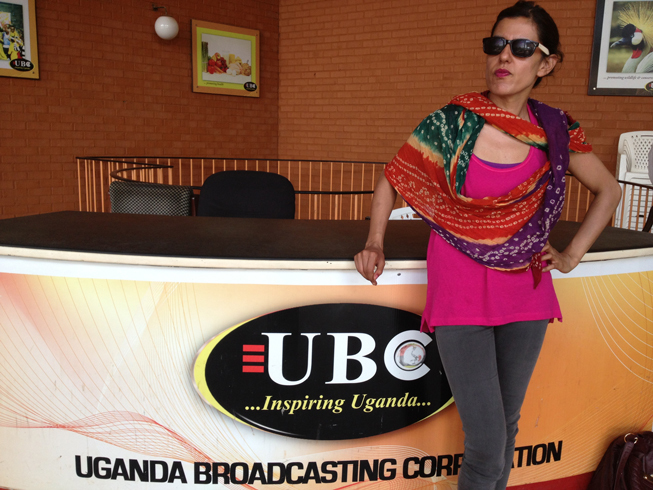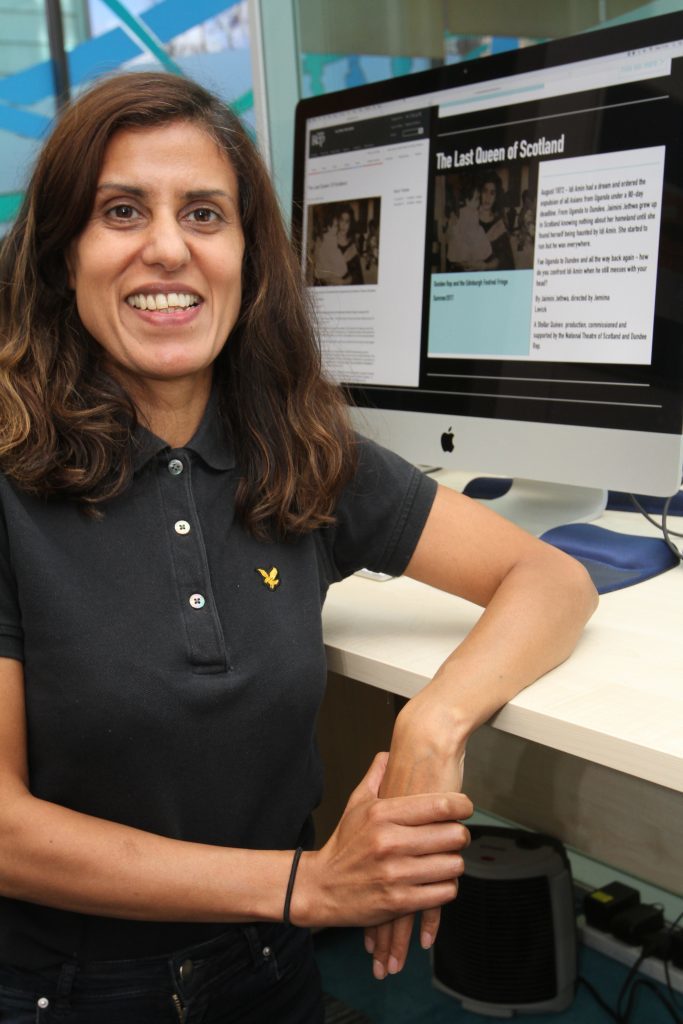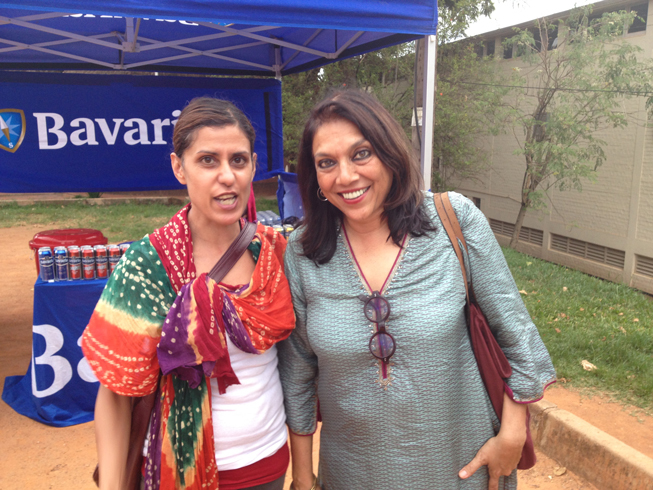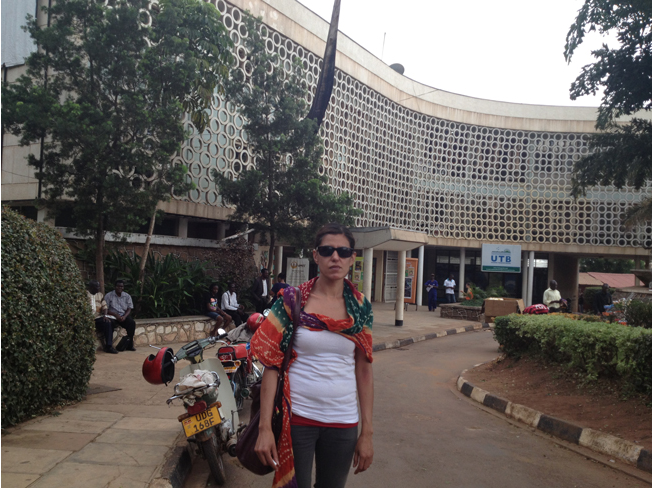In 1972, when little Jaimini Jethwa was just one, Uganda was in turmoil following the coup by ruthless Ugandan despot Idi Amin. Following Amin’s order for the expulsion of all Indians from the country under a 90-day deadline, her family fled Uganda and found themselves in Dundee.
Now, more than 40 years later, Jaimini tells the story in The Last Queen of Scotland, a powerful one-woman play previewing at Dundee Rep in July before showing at the Fringe Festival.
Playwright and Abertay University video producer Jaimini explains how the play – directed by the Rep’s Jemima Levick – came about: “My original research inspired me to write the poem The Last Queen of Scotland which takes the form of a conversation with Idi Amin and discussed his decision to expel us from our home,” she says.
“The poem provided the title and I developed the starting point for the play with the help of mentoring from National Theatre Scotland and Dundee Rep.
“The play looks at how one woman combats her demons with Idi Amin in Uganda in 1971, and then landing in Dundee and trying to make sense of everything that has happened, as well as the social and economic situation in both Dundee and Uganda in the 1970s,” she continues.
“It sheds light on a unique period in Scotland’s social history and the particular story of a community in exile that has rarely been told.
“While it’s inspired by my family’s experience when they arrived in Tayside, it has been stylised for dramatic effect.”
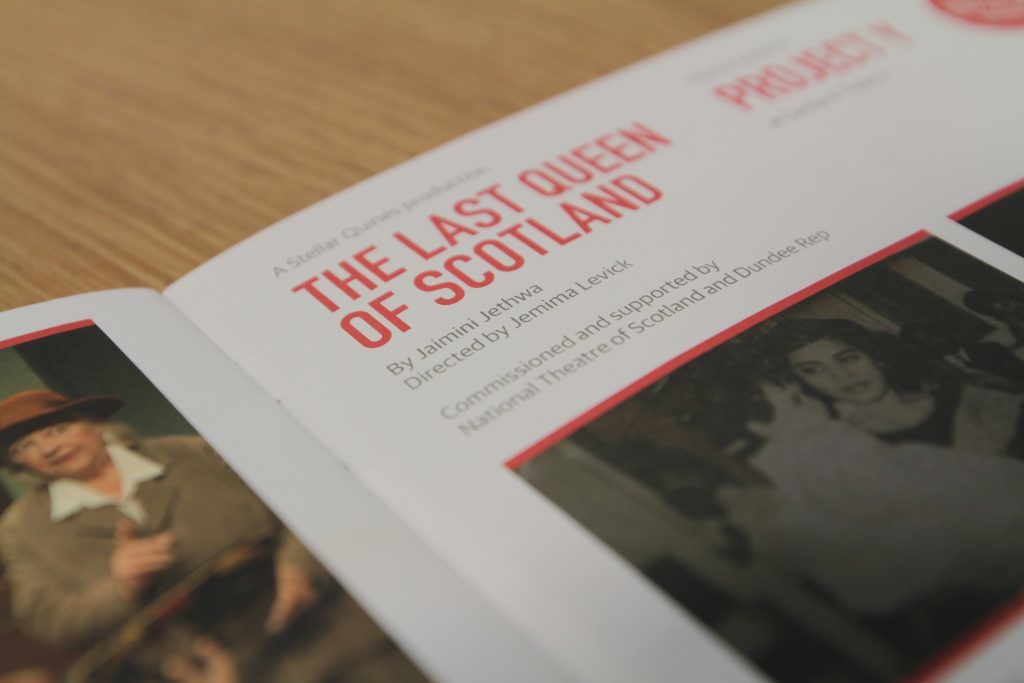 Jaimini, who considers herself to be a Scot through and through, went to Craigie High School before studying film and television in London. However, it wasn’t long before she was back in her beloved Scotland. “I missed the culture and the Dundonian dialect and felt I was losing that in England,” she says.
Jaimini, who considers herself to be a Scot through and through, went to Craigie High School before studying film and television in London. However, it wasn’t long before she was back in her beloved Scotland. “I missed the culture and the Dundonian dialect and felt I was losing that in England,” she says.
In recognition of her passion for her home city, the script for The Last Queen of Scotland is written in the street sounds of the city’s dialect, accompanied by a live urban soundtrack.
“It’s my homage to my city, my love letter to the D.
“There have been so many tributes to the mill lavies, to the Timex workers but I wanted to tell a story that is current and talks to a new generation about a subject that is close to the hearts of many.”
Idi Amin was known to adopt fanciful imperial titles for himself and the title of Jaimini’s work is inspired by the 2006 movie The Last King of Scotland.
“I have decided to reclaim my heritage with this play,” says Jaimini. “I am saying to Idi Amin: ‘You can’t have Scotland, and what do you know about the country anyway?’”
Many families fled Uganda to England to settle but fewer than five families came north of the border. “Why they came to Scotland, and to Dundee in particular, is one of the crucial questions the play addresses,” says Jaimini, not giving anything away.
In 2014 Jaimini returned to Uganda to National Theatre Kampala as part of Banta in Uganda, a research and development project supported through Creative Scotland’s international fund.
“When you Google Idi Amin one of the first things that comes up is The Last King of Scotland – Scotland doesn’t want that association,” says Jaimini forcefully.
“He was a potent character and although it’s hard to change history the play chips away at his persona.”
She reveals the secret to good scriptwriting: “It comes down to character,” she says. “If you have a good character, you have your story. Even though this is a one-woman show, it’s populated with the ghosts of so many other characters who all help her on her journey.”
She admits that working on the play has been an amazing experience. “It’s been quite a long project and I’ve been supported by Creative Scotland for a few years,” she explains. “Dundee Rep have been incredibly supportive and the National Theatre of Scotland have guided me throughout – I’ve learned so much.”
While the actor for the show is still to be cast, Jaimini knew from the start that she wanted the play to premiere in Scotland, and in her home town, but she is hopeful it will eventually travel further afield.
“It’s one of my dreams to be able to put it on in Uganda,” she smiles. “Not only is the Scottish language revered there but my family’s story will have come full circle.”
The Last Queen of Scotland: Dundee Rep, July 21-22. www.dundeerep.co.uk
